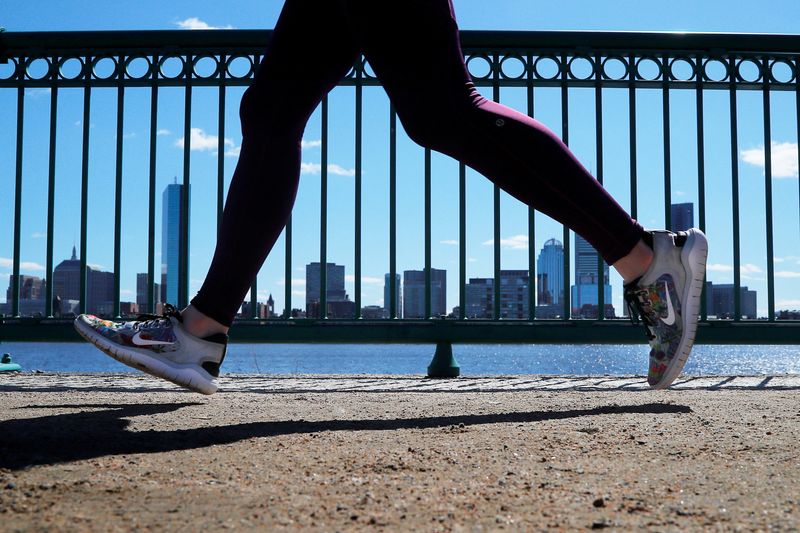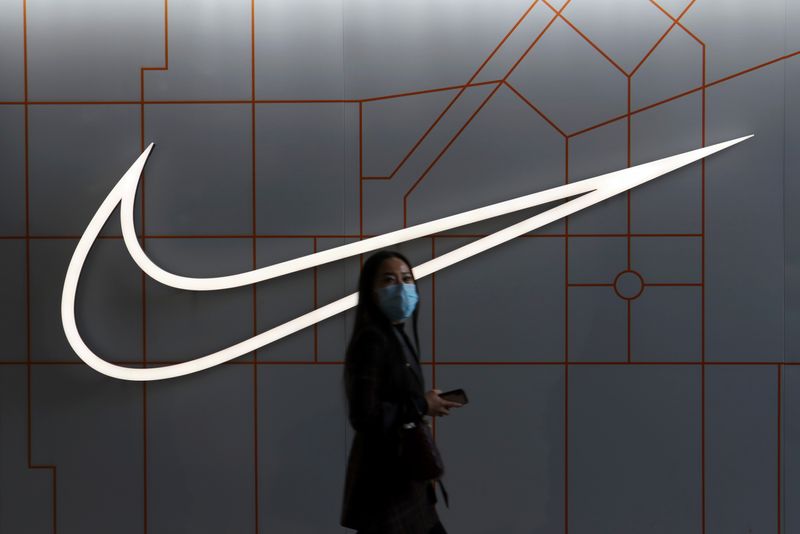By Mehr Bedi
(Reuters) - Sneakerheads are thinking twice before splurging on the newest set of kicks as the rising cost of living takes a toll on consumer spending, setting the stage for a potential slowdown in sales for Nike Inc (NYSE:NKE) in coming months.
At least eight brokerages have cut their price targets on Nike in the two weeks ahead of the company's first-quarter results on Thursday as inflation-hit U.S. consumers increasingly scrimp on discretionary items, adding more pressure on the athletic gear maker that is reeling from a slowdown in China.
The sneaker giant's hot-selling Jordan, a brand that has grown its annual revenue by nearly 42% over the past two years to $5.1 billion and sees its $200 sneakers sell out in minutes, is also currently experiencing a downturn in enthusiasm around new styles, according to Wedbush analysts.
"This (slower sell through rates) is unusual for retro Jordan launches which usually sell out within a day, and might confirm signs of macro/inflation pressure on sneaker buyers, or 'launch fatigue'," Wedbush analyst Tom Nikic wrote in a note.
Since the start of September, analysts have cut their full-year sales expectations for Nike to $49.85 billion from $50.34 billion. Some believe Nike will also lower its own current sales forecast on Thursday.
THE CONTEXT
Nike saw its fortunes grow during the pandemic as sweatpants and joggers became a more intrinsic part of everyday fashion, while demand for the company's running shoes and sportswear surged from people taking up more outdoor exercises.
However, the easing of COVID-19 restrictions has shifted some of that spending back to more formal and social occasion-based apparel, while overall demand takes a hit from decades-high inflation.
That comes as concerns grow about the pace of recovery in China where the government's Zero-COVID policy lockdowns dampen demand in the region, which accounts for about 17% of Nike's annual sales.
Rival Adidas (OTC:ADDYY) also slashed its full-year earnings target in July, citing a slower-than-expected recovery in China from pandemic restrictions.
Still, some analysts are more bullish about Nike's business in North America, citing an improving supply chain and a better inventory position.
"Nike products generally continue to sell through at high prices with fewer promotions in North America and Europe. The pricing data also suggests Nike's inventory levels are mostly well-controlled," UBS analyst Jay Sole said, citing UBS Evidence Lab pricing data.
THE FUNDAMENTALS
* First-quarter revenue estimates have declined to $12.27 billion from $12.32 billion since the start of September
* Full-year earnings per share estimates have also fallen to $3.66 from $3.74, according to IBES data from Refinitiv
* The blue-chip stock is one of the worst Dow 30performers this year, down about 42%, compared with the index's18.6% fall.
WALL STREET SENTIMENT

* The current average analyst rating on NKE shares is "buy", with 24 rating it "strong buy" or "buy", 10 rating it a "hold" and two rating it a "sell" or "strong sell".
* The mean price target is $128.28, down from $166.67 at the start of January
